Clever Nowruz of film “Crazy Kura”
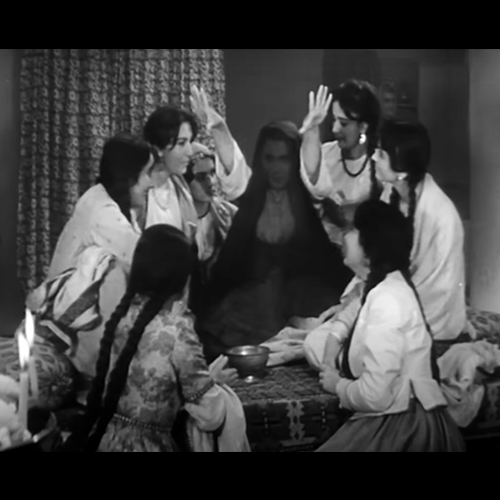
If we give the answer to the question “What makes Christmas popular in almost every part of the world?” as a “Film, film and film!” we will not be wrong at all. Cinema has a unique role in making people love an event, a place, music, even a word. Because cinema is open to everyone. As the center of commercial films, the United States, more specifically, Hollywood, produces dozens of Christmas movies every year. Since the 1980s, with the increase in the use of video cassettes by the general public, it witnessed noticeable increase in the production of New Year’s films. From this point of view, if the Christmas films made before the popularity of cassettes were not considered economically viable, since that date, the view and approach to films with this theme has changed radically. (reference: decider.com) But would be an original sin to say that Christmas movies have been made since 1980. Because “White Christmas”, “It’s a Wonderful Life”, “The Bishop’s wife”, etc., from the Golden Age of Hollywood, which are already considered classics, such films have been produced in the 1920s-1960s. The productions of that period may not be very familiar to the Azerbaijani audience. But after independence New Year’s films came to our homes through television with the dubbing of Hollywood films. In this regard, “Home Alone” comes very first. Not only me, but many people’s New Year’s film has been this for many years. Although many years have passed and hundreds of films produced with Christmas and New Year atmosphere, “Home Alone” has already become a classic of this subject in the hearts of many Azerbaijanis. If we do a little research, we will see that this 1990 film grossed $285,761,243 in US theatrical release, and $476,684,675 worldwide.
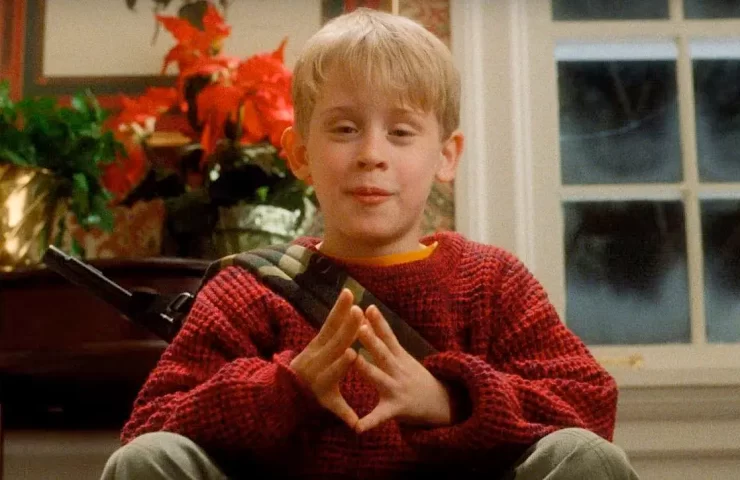
Hollywood’s ability to turn New Year’s movies into a cult has created a ripple effect in most European countries that celebrate Christmas, and they also produce films dedicated to the New Year every year. Even the countries that do not celebrate Christmas, including Azerbaijan know the date of the holiday, its name, customs, color, decoration of streets with lights and many other things, and even love it. This is because people either want to create that fairytale environment in the new year, or it is one of their biggest dreams to visit those celebrating countries. Because movies create an ideal world.
It should be remembered at this very moment that according to the official information of UNESCO, Novruz is considered a national holiday not only of Azerbaijan, but also of 12 countries, including independent Turkic countries. Novruz, like Christmas, is a multi-national holiday. Academician Rafael Huseynov states that Nizami Ganjavi passes on information in his literary tradition named “Khamsa” in the series of masnavis that Novruz holiday was celebrated 350 B.C, that is to say 24 centuries ago. But have people living in this vast geography been able to turn Novruz into a cult? Let’s not go far, is the samani planted during Novruz in many countries known as Christmas tree? I think we all know the answer.
Novruz is a symbol of national existence, an object capable of being the driving force of national development through cinema. Aygun Telmangizi states that “The holiday reflects both national character and contemplation from the great numbers of parameters point. Because the holiday, on the one hand, reflects ethno-mythical beliefs and, on the other hand, cosmogony views as a perfect system and owns a ritual-mythological semantics that has a systemic character.” (anl.az) In the words of Hamida Nizamigizi, “There is a victory ceremony in Novruz: spring wins over winter, heat defeats cold, and human blood warms.” It communicates with nature via the energy of blood memory, rejoins it. The desire to return to the origin, to keep the national self as supreme, is the most fundamental and natural form of the nation’s spirit in Novruz rites and ceremonies. (medeniyyet.az website)
Novruz is sung gently and described in “Bahariyya” lyric poems, which are widespread in our poetry. Masters poets such as Imadadin Nasimi, Shah Ismayil Khatai, Muhammad Fuzuli, Dirili Gurban, Molla Panah Vagif are names that have written their names in history in this hymn. (reference: aztc.gov.az) Prominent local composers such as Uzeyir Hajibeyov, Fikret Amirov, Ogtay Zulfugarov, Rahila Hasanova composed various songs.
Almost everyone knows that during Soviet period in Azerbaijan, our national holidays, including Novruz, were banned. This prohibition manifested itself in creativity, including film industry. It is no coincidence that when the Nowruz scene is remembered in film, the first thing that comes to mind is the film “Crazy Kura”. Since its establishment in 1923, more than 1,500 feature, documentary, and animated films have been produced at the Azerbaijanfilm film studio (reference: azerbaijanfilm.az). The most accessible and first information from my research showed that among the produced films, only three feature films “Crazy Kura”, “I want seven sons” and “The Golden Cliff” also demonstrate the holiday in the course of the events. Among them, the documentary films “Wreath of Nowruz” by Rafig Yubashov and “Ojag” by Azer Zamanli also manifest themselves. İ am afraid to underline that it is backbreaking to name a film that tells about the story happened on the eve of Novruz and to say “this film is a Novruz film”. But again when you say Novruz and film “Crazy Kura” still comes to mind.
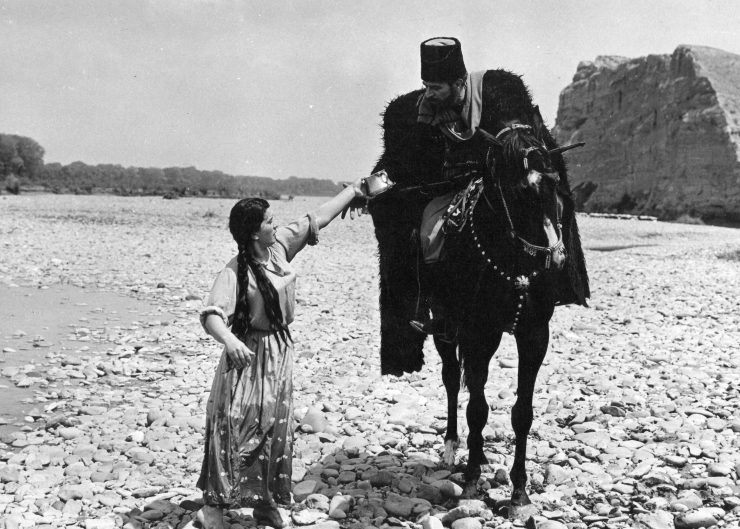
The film, written on the basis of Ismayil Shikhli’s work of the same name, was made in 1969. Another well-known writer Isa Huseynov (Isa Mughanna) was the editor of the film directed by Huseyn Seyidzadeh.
It’s true, I just said that we don’t have a film dedicated to Novruz, but “Crazy Kura” can be called a “Novruz one” somewhere. Why? Because coachman Mammadali answers to the question about the forcing the horses to run faster at the very beginning of the film, in the 5th minute as: “Guest, maybe you’re not in a hurry, but I have to get myself home quickly.” Today is the evening of the holiday.” We learn that it is now the holy Tuesday of Novruz. From the dialogue, it is understood his motive, that according to tradition, everyone should gather around the family at home and celebrate. Soi-disant, if you are not at home on the first day of Nowruz, you will be away from home for seven years. According to ancient customs, the outer doors should not closed on that day. The perception of celebrating family, unity, togetherness, which is also shown for the Christmas holiday, is clearly told to us in the first scene many years ago.
After repairing his carriage, “Come on, guest, why are you going to our village?” asked by coachman, becomes happy to hear the answer “To celebrate holiday”. It represents how the holiday is vital for Azerbaijani of the time, including the common peasants in the image of illiterate
After talking with coachman Mammadali, we enter colorful village. I mentioned “colorful” purposefully. It may be dark, but the flames, music, torches in the hands paint the village completely golden-red. From Mullah’s phrase “May God make you happy”, the movie tells us that the people of Azerbaijan should only applaud and say good words on the holiday. If we remember the proverb “Let it go your mouth to your own skirt” (definition of this proverb is if you always say bad words, let this negative impact from your mouth have impact exactly on you, not others) we will see that Novruz is actually not only a holiday, but a philosophy. Because, the more a person makes the words told by him/her positive, the ear gets used to the positive, and the brain is tuned to the positive. Indeed, a person’s word is as necessary not only for him/her, but also for the intention of the person who knocks on the door on the evening of Last Tuesday. (Holiday night of Nowruz)
When the ladies in the village hug and congratulate each other, and especially younger ones congratulate the older ladies as a way of respect holding a khoncha (a plate with lots of sweets) in her hand, we understand that whomever you see on this evening, just congratulate.
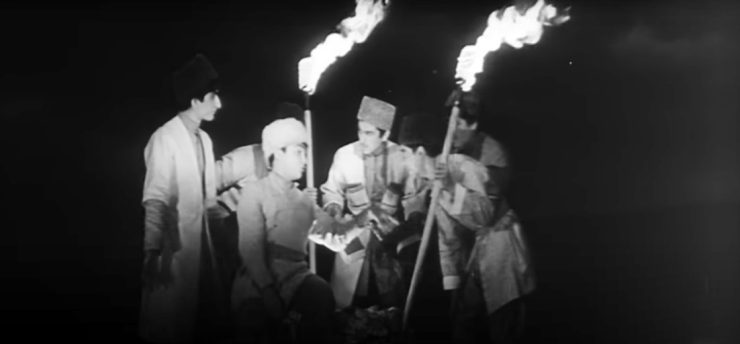
As we watch the film, verses from our immortal poet Muhammad Huseyn Shahriyar spring to mind:
“Everyone was dropping a shawl through chimney,
What a wonderful tradition to dangle a shawl.”
Because the next tradition of Holy Tuesday is related to dangle a shawl. If we take into account that in Azerbaijan of that time, there were neither conditions nor notion for boys and girls to socialize, make friends, communicate in that time of Azerbaijan when the events happen. Therefore, it seems that many customs appeared out of necessity. In the film, juvenescent boys ask for their share, making it fun, young girls respond in such a way increase the fun and all is a sign that in fact, they cannot talk comfortably face to face. However, it is a scene that looks very pleasant in its visual solution in terms of tradition, mingling, kindness, strengthening of friendship bonds.
A doctoral thesis on “Nowruz Traditions and Beliefs in Azerbaijan” written by Sevinj Gasimova, whose scientific director and advisor is Dr. of Philology, Seyfaddin Rzayev, states: “One of the main customs of Last Wednesday is the custom of “papaqatdi.” In some places, it is also called sharsalsallama, shalsallama, baca-baca, or nunnunu. The content, after all, is to throw a hat at the houses on Wednesday night and ask for a sweet share from the exact home. Based on numerous folklore data and our own observations about the custom of papagatdi, we can say that this custom has two meanings: First, the custom of collecting the holiday share, which is performed by everyone. It is usually performed by children and especially engaged boys. Second, a magical fortune-telling custom. This was usually performed by boys who threw hats and cummerbunds at the houses of girls they loved. The thrown hat, cummerbund had to be recognized. The boys were learning the attitude of the girl’s mother, herself, or other people who knew about this love. That’s why, luckily, they were excitedly waiting to see what news would come out on Tuesday night. The answer was clear from the items placed on the hat and cummerbund. Sweet things, lots of stuff, etc. and others were representing positive answer”
The ring swinging ceremony performed in the film is different from the fortune telling on the ring of the betrothed girl in our modern times. In other words, this ceremony is called “wasfihal” (literal translation – the praise of the mood) ” According to prominent writer Y. V.Chamanzaminli, among our people there was making praises tradition on each Tuesday, starting one month before Novruz. Women and girls would gather, take an engagemtn ring from each and put it in the bowl of water. The woman sitting at the head of Bowl would take out any ring from the water and to tell fortune with it. The “Wasfi-hal” ceremony is essentially a water fortune telling. And this water, as we know, is not ordinary water, but Tuesday one” (Sevinj Gasimova – “Traditions and Beliefs of Nowruz in Azerbaijan” page 134.) Pakiza’s ring comes out in “Crazy Kura” and Pakiza’s wish for the New Year prepares the audience for what to expect in the next parts of the film. It is said in the wasfi-hal:
Hey girls, run, the boy is coming.
Open the door, the boy is coming.
Velvet mattress, flower pillow,
Open it from wherever you want, the boy is still coming.
But Pakiza’s ensouling boy, which everyone knows, called “Gözlatı” (literal translation “under the eye”. You were not allowed to look at the girl with direct eyes. You should bow your head down and then you could look at the girls with glance hiddenly) is not coming from the door, but right from the chimney for now. This little dialogue again causes amusement of the girls. Shamkhal hangs his hat from the chimney and symbolically asks his fortune from the girls there. What is interesting is that, with the advice of the old grandmother, when the khoncha is brought to give the holiday shares, it was called “holiday food” instead of “khoncha”.
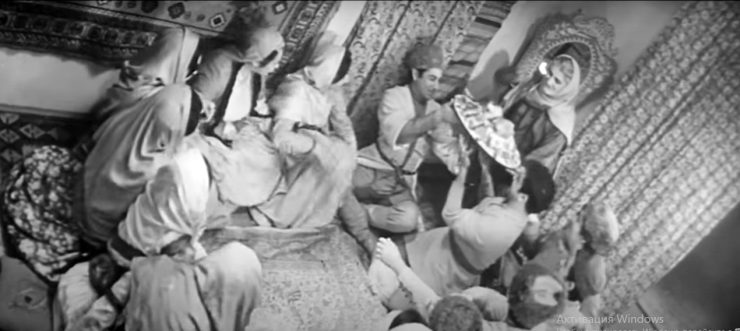
This may seem strange to non-Azerbaijanis. After all, what’s going on here, boys hanging a bag from the chimney and that`s it. Girls are happy, laughing, having fun. It is true in one respect. But when it is approached from a national point of view, one feels a little sorry for those girls. They live in such a closed environment, there are so many superstitions that whatever happens to them on a single holiday evening is allowed within the framework of only customs.
“Woww, it’s so heavy” one boy mentions. The other one, “I told you, let’s come here” shows the existing financial difference of the period. It meant that relatives and neighboring girls in this house have a good finance, since they decorate khonchas and they bought Novruz food in abundance.
We can often witness that the meaning of some speech is hidden in traditions. For example, if you have a cat in the bag instead of a sweet, the girl who gave you this says, “If the cat escapes from your hand, take a brick and hit it on your head.” Considering that at that time, a man’s power was strong, a man could not be conquered even with words, etc. trends have become the basis of everyday life. That’s why Shamkhal and the boys around him, who got the cat, belittled themselves from this answer, in a way, they “attacked” the house. Because Shamkhal says, “Now that this has happened and we will take this kitty-cat.” (referring Pakiza who put the cat there) As all the girls cover their face because non-females are coming the grandmother of the house says, “Girls, I told you that they won’t give up”. But young girls, who are laughing because of this “attack” are protesting by saying, “Masma aunty, do your business,” as if she interferes to their limited fun and laughter.
But instead of taking the girl, they gather around plov (national dish) table. From the dialogue between Pakiza and his love Shamkhal, we go to the scene of his sister Salatin taking the feast meal in a bowl to her hidden love Russian Ahmad. In order not to be heard her footsteps by Ahmad, she takes off her shoes and Salatin is greeted by a leafless, bare tree similar to the cross of Jesus. The girl, who put the bowl with flower symbolize her secret love to his window, the joy of finding a place to hide behind the only tree around the lonely house. As soon as she runs away, aforementioned independent boys come to congratulate the teacher Ahmed, when the other teacher just reached his home from Gori city. Shamkhal, who lays aside his sister’s bowl tries to make up for his rudeness with a feast, as Shamkhal’s friends are embarrassed to call the guest “goatbeard”. In other words, the power of Novruz is shown once again – via the festive gifts scattered on the table. It means that the holiday can also wash away the small sins committed.
Next morning of the holiday night, the Russian goes out for a walk around the village. Mammadali’s daughter in the carriage gives the Russian an egg. Alexey Ospiyevich decides to have an egg fight with a boy named Saftar Khan. But the fact that the children run hither and thither saying “the Russian is coming” can be understood as a short artistic expression of our fear, avoidance, absent themselves to direct communication who is different in community or push themselves off foreigners due to religious differences.
During the conclusion of the egg fight, we see the villagers celebrating with each other in the background. A detail specific to the Azerbaijani identity does not go unnoticed against this background. A woman carrying a holiday share talks to another woman. But the share is covered. From our grandmothers, we have such a concept in our genetic memory. Whatever you’re carrying, don’t carry it uncovered. Maybe someone who sees it on the street will covet it or hungry, but perhaps they can’t afford it. We can see daily life habits in the background with this small detail in “Crazy Kura”. However, one point that caught my attention was that, despite the fact that the sotry took place not in Baku, but in Gazakh district, it was precisely in this dialogue that the parties spoke with the obvious Baku dialect.
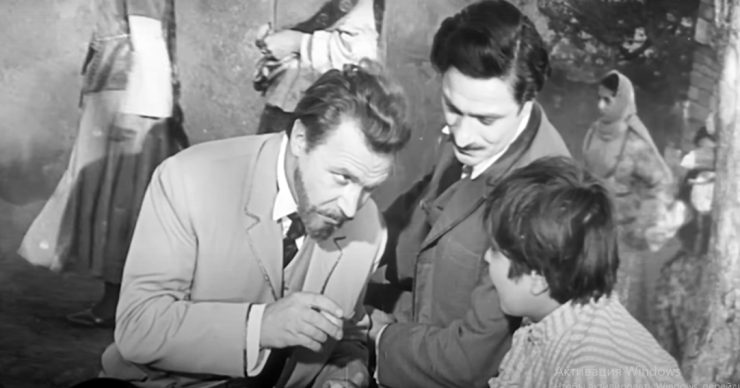
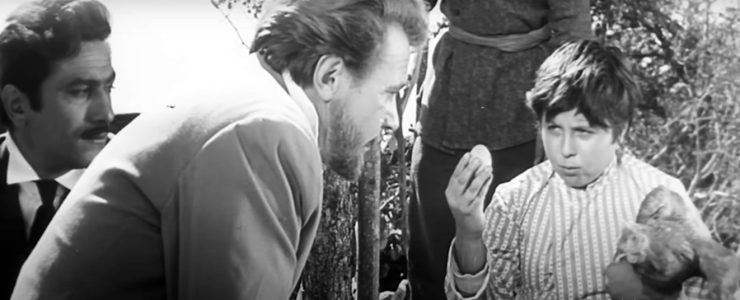
It is worthy to note that this game has historically been very widespread and well-known. In the past, heads of state were also not indifferent to this game. Habib Idrisi writes that one of the Safavid rulers, Shah Abbas, also loved to fight with eggs.
Sevinj Gasimova mentions that “Egg fighting game reflects the main meaning of Nowruz holiday. Thus, the egg is a symbolic image of both Azerbaijani and world culture. In all world mythologies, it symbolizes the creation of the world, the formation of the cosmos from chaos. Yeleazar Meletinsky shows that totem birds, islands, heavenly bodies, especially the sun, a number of gods, and finally the earth, which is the center of the cosmos, are formed from the egg in more archaic mythologies.
In general, one thing is crystal clear that there is the struggle between Good and Evil at the root of all games and competitions whether staged in a film or in the memory of the nation. From this point of view, the “clever” Novruz of “Crazy Kura” is a monument that still retains its relevance and has found artistic solutions for the view to our national identity.
Finally, just like before the New Year, everyone wants to watch a movie that can convey that atmosphere. I would not be wrong if I say that “Crazy Kura” is exactly my Novruz ideal. Unfortunately, we seem to be losing that atmosphere and environment over the years and moving away from the traditions that are an indicator of our identity. And the worst thing is that we cannot see it in our films, where idealized world are created. I hope that the stories of such a “clever” holiday, which have deep philosophical layers screen appearing will not be limited to “Crazy Kura”.
Afaq Yusifli
